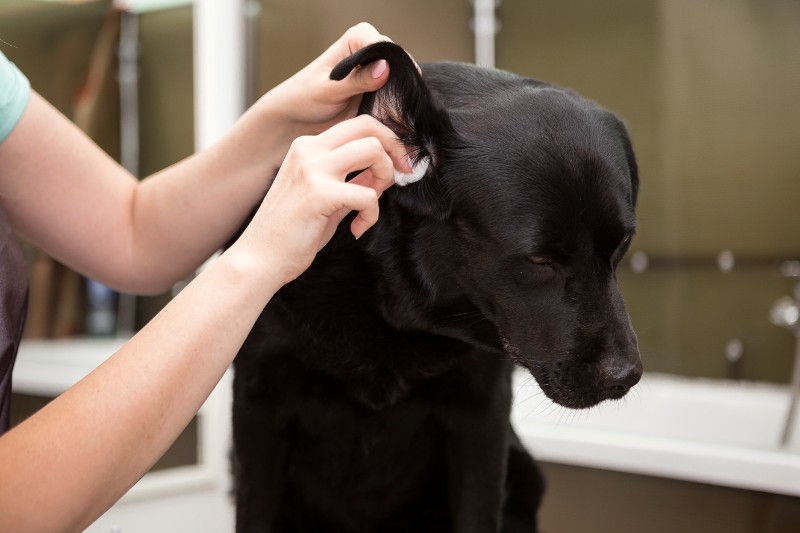

Our animal friends suffer from ear infections too. Pet ear infections can be painful for the animal and frustrating for their caretakers. As pet lovers it is up to us to prevent them when possible, recognize them quickly, and treat them in an effective manner. Pets in Stitches is here to help you help your pet’s ears stay in tip top shape.
All Ears About Pet Ears
Our pet’s ears are made up of the same parts that our own are. They are comprised of:
- The pinna (the outer ear flap) – diverts sound into the ear canal and protects the ear opening
- The external ear (the canal) – funnels sound to the tympanic membrane, or ear drum
- The middle ear – the air-filled area behind the eardrum
- The inner ear – the innermost portion of the ear that communicates sound and balance with the brain
Pets use their ears to pick up a much broader range of sound than we do. Humans can hear frequencies between 20 and 20,000 hertz, while dogs and cats can hear sounds upwards of 60,000 hertz.
Preventing Pet Ear Infections
Unlike ear infections in people, which typically affect the middle ear, pets more often suffer from external ear infections. An external ear infection, or otitis externa, affects the skin lining the external ear canal.
During a flare of otitis externa, the external ear canal becomes inflamed or otherwise irritated. Sometimes these abnormal circumstances can result in the overgrowth of yeast and/or bacteria, a smelly and painful situation.
Pet ear infections may start with anything that affects the normal environment of the ear canal. Growths or foreign objects in the ear, excess hair or wax, moisture, or causes of inflammation such as allergies can all result in an infection.
While not all pet ear infections are preventable, there are certainly some things that you can do to ward them off:
- Prevent moisture from entering the ear canal (try gently tucking a cotton ball in the ears during a bath, be sure to remove when done)
- Promote proper air flow in the ears by having excess hair plucked
- Avoid using irritating substances like alcohol to clean the ears
- Cleaning the ears frequently to remove excess wax and potentially irritating substances as well as to normalize the bacteria living there
When cleaning your pet’s ears, use a pH-balanced ear cleaning solution for animals. You can apply the solution by squeezing it directly in the ear canal with gentle pressure (try warming the bottle in a dish of warm water to make this less jarring to your pet). Allow your pet to shake their head, loosening up any debris in the canal. This can get messy, so plan accordingly!
Then use a cotton ball to gently remove any material from the ear canal and to wipe out the inside ear folds.
For pets with very painful ears, recurrent infections, or a large amount of debris, sometimes cleanings are best done while they are under sedation.
What to Do When Trouble Strikes
Regular ear monitoring helps you be in tune with what is normal for your pet’s ears. Seek veterinary care right away if you notice anything out of the ordinary such assigns of an ear infection:
- Pain when handling the ear
- Redness
- Swelling of the ear flap or ear canal
- A bad odor
- Increased discharge from the ear
- Shaking of the head
- Pawing at the ear
- Holding the ear in an abnormal position
While regular cleanings and ear canal maintenance can prevent ear infections in pets in some situations, sometimes they happen in spite of our efforts. Prompt and effective treatment is the key to keeping your pet happy and comfortable and protecting that amazing hearing ability.
